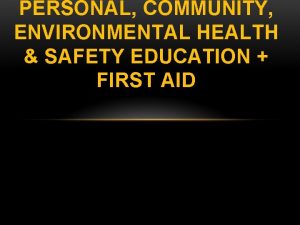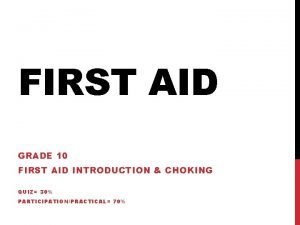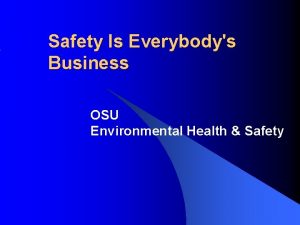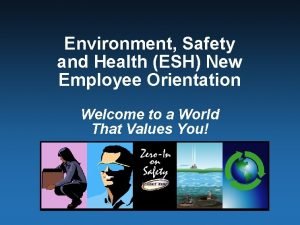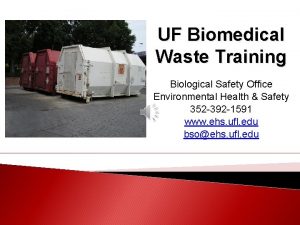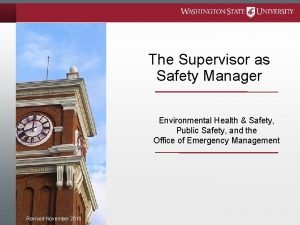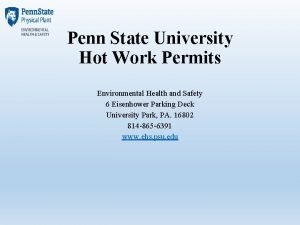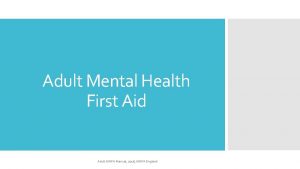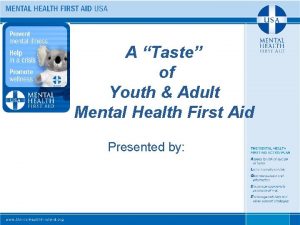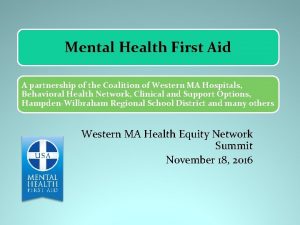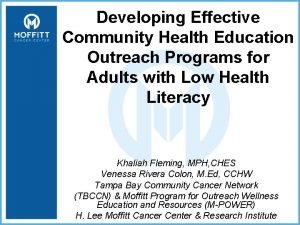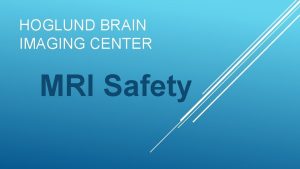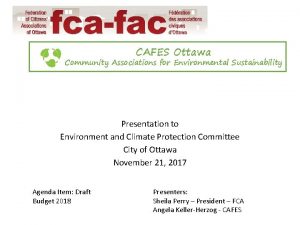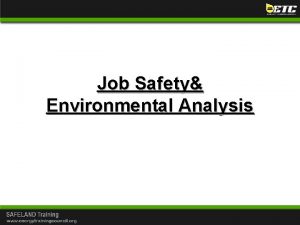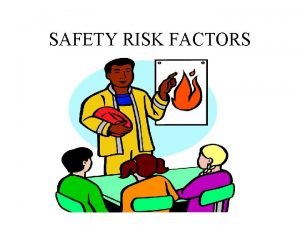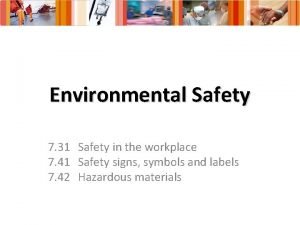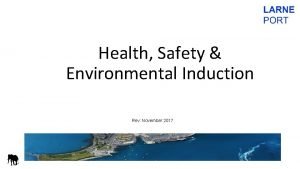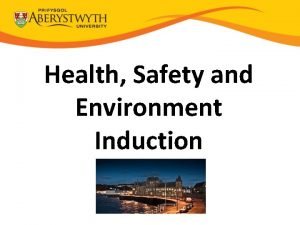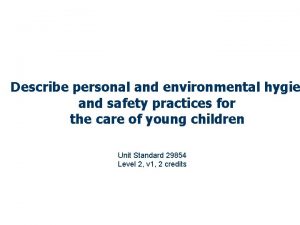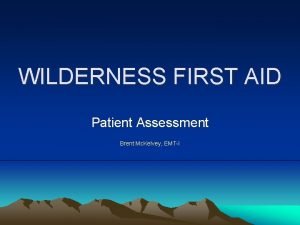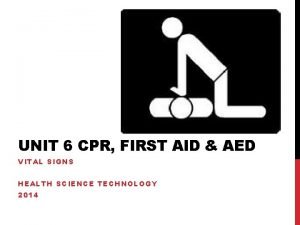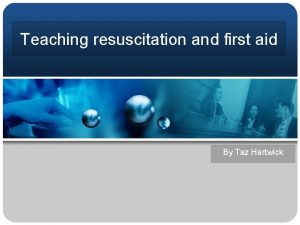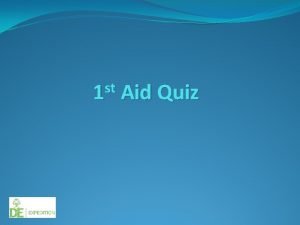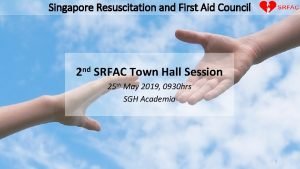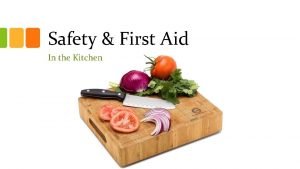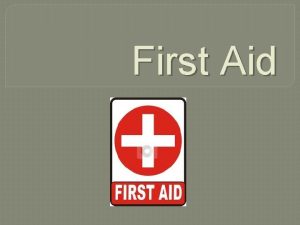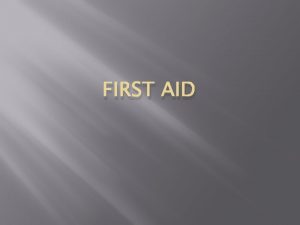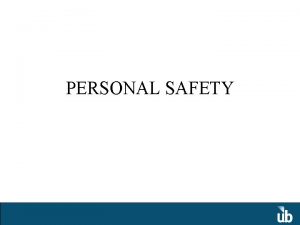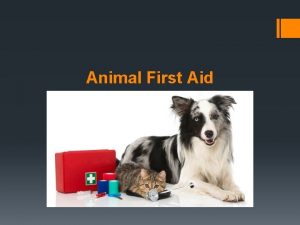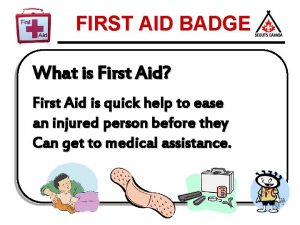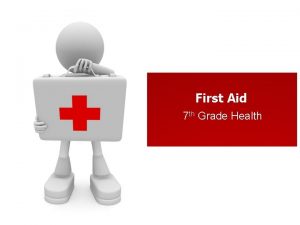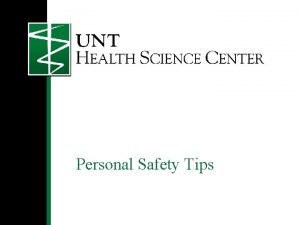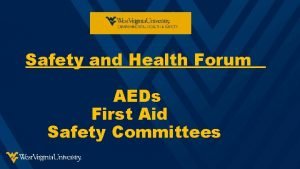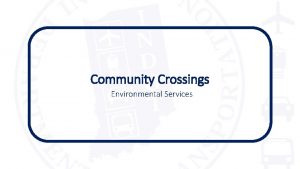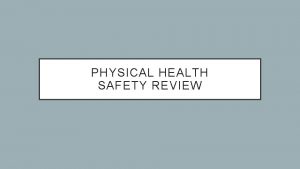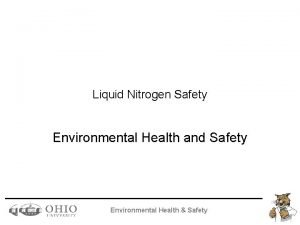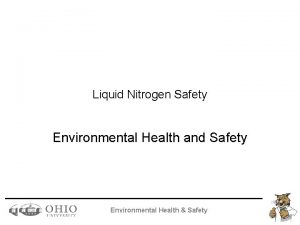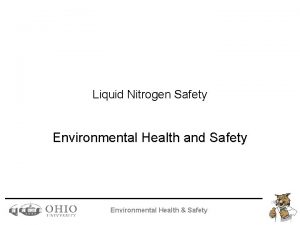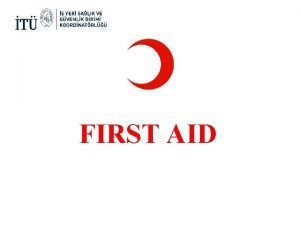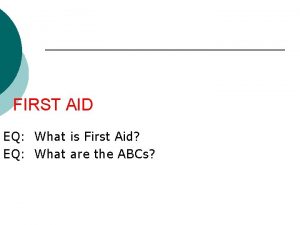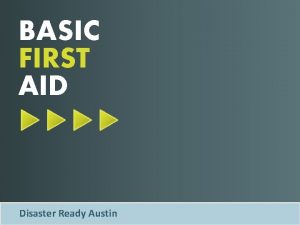PERSONAL COMMUNITY ENVIRONMENTAL HEALTH SAFETY EDUCATION FIRST AID





































- Slides: 37

PERSONAL, COMMUNITY, ENVIRONMENTAL HEALTH & SAFETY EDUCATION + FIRST AID

• Personal Health Application is an electronic tool of storing, managing and sharing health information in illness and wellness by an individual in a secure and confidential environment.

• The PHR is a tool that you can use to collect, track and share past and current information about your health or the health of someone in your care. Sometimes this information can save you the money and inconvenience of repeating routine medical tests. Even when routine procedures do need to be repeated, your PHR can give medical care providers more insight into your personal health story.

PERSONAL HEALTH & WELLNESS • Health Education Services believes that optimal overall wellness in all aspects of life- emotional, intellectual, social, spiritual, and physical- is key to success in college and beyond.

EMOTIONAL • Emotional wellness is a dimension that involves being fully in touch with feelings and emotions regarding yourself and others. Developing self-confidence, love, and trust for others are key aspects that help to define emotional wellness. Having and maintaining a strong, healthy emotional aspect of personal wellness can help cope with emotional challenges in life that often go hand-in-hand with college years.

INTELLECTUAL • This aspect of wellness refers to the development of the mind as an instrument for decision making as well as learning and interpreting experiences. It involves critical thinking, curiosity, and creativity. The ability to be open to new experiences and ideas that contribute to growth are characteristics associated with a healthy intellectual dimension.

SOCIAL • Social wellness refers to the idea of being able to develop meaningful interpersonal relationships. It also involves being able to maneuver through various social situations while appreciating the similarities and differences between people.

SPIRITUAL • Spiritual wellness revolves around the development of your own personal belief system and adherence to that belief system. Seeking purpose and meaning in life, whatever your beliefs, while appreciating the various religious perspectives of other people is a key aspect of spiritual wellness.

PHYSICAL • This is perhaps the most well-known category and it includes a personal attention to and maintenance of overall health through nutrition, physical activity, sleep, and positive healthy habits to maintain a healthy quality of life. Physical wellness is the ability to take charge of your health by making conscious decisions to be healthy.

PERSONAL HEALTH PRACTICES AND COPING SKILLS

• Personal Health Practices and Coping Skills refer to those actions by which individuals can prevent diseases and promote self-care, cope with challenges, and develop self-reliance, solve problems and make choices that enhance health.

• Definitions of lifestyle include not only individual choices, but also the influence of social, economic, and environmental factors on the decisions people make about their health. There is a growing recognition that personal life "choices" are greatly influenced by the socioeconomic environments in which people live, learn, work and play.

LIST OF HEALTH PRACTICES • Eating • Activity • Sleep • Medical • Interpersonal Negotiation • Safety

• Social support • Mental outlook • Work • Emotional Regulation/Stress • Spiritual • others

COMMUNITY HEALTH

• Community health, a field of public health, is a discipline which concerns itself with the study and improvement of the health characteristics of biological communities.

• community health tends to focus on geographical areas rather than people with shared characteristics. The health characteristics of a community are often examined using geographic information system (GIS) software and public health datasets.

COMMUNITY HEALTH MAY BE STUDIED WITHIN THREE BROAD CATEGORIES: • Primary healthcare which refers to interventions that focus on the individual or family such as handwashing, immunization, circumcision.

• Secondary healthcare refers to those activities which focus on the environment such as draining puddles of water near the house, clearing bushes and spraying insecticides to control vectors like mosquitoes. • Tertiary healthcare on the other hand refers to those interventions that take place in a hospital setting such as intravenous rehydration or surgery.

ENVIRONMENTAL HEALTH

• Environmental health is the branch of public health that is concerned with all aspects of the natural and built environment that may affect human health.

• Environmental health and environmental protection are very much related. Environmental health is focused on the natural and built environments for the benefit of human health, whereas environmental protection is concerned with protecting the natural environment for the benefit of human health and the ecosystems.

• "Environmental health addresses all the physical, chemical, and biological factors external to a person, and all the related factors impacting behaviours. It encompasses the assessment and control of those environmental factors that can potentially affect health. It is targeted towards preventing disease and creating health-supportive environments.

DISCIPLINES • Environmental epidemiology studies the relationship between environmental exposures (including exposure to chemicals, radiation, microbiological agents, etc. ) and human health.

• Toxicology studies how environmental exposures lead to specific health outcomes, generally in animals, as a means to understand possible health outcomes in humans. Toxicology has the advantage of being able to conduct randomized controlled trials and other experimental studies because they can use animal subjects. However there are many differences in animal and human biology, and there can be a lot of uncertainty when interpreting the results of animal studies for their implications for human health.

• Exposure science studies human exposure to environmental contaminants by both identifying and quantifying exposures. Exposure science can be used to support environmental epidemiology by better describing environmental exposures that may lead to a particular health outcome, identify common exposures whose health outcomes may be better understood through a toxicology study, or can be used in a risk assessment to determine whether current levels of exposure might exceed recommended levels.

CONCERNS • Air quality, including both ambient outdoor air and indoor air quality, which also comprises concerns about environmental tobacco smoke. • Body art safety, including tattooing, body piercing and permanent cosmetics. • Climate change and its effects on health.

• Disaster preparedness and response. • Food safety, including in agriculture, transportation, food processing, wholesale and retail distribution and sale. • Hazardous materials management, including hazardous waste management, contaminated site remediation, the prevention of leaks from underground storage tanks and the prevention of hazardous materials releases to the

• Housing, including substandard housing abatement and the inspection of jails and prisons. • Childhood lead poisoning prevention. • Land use planning, including smart growth. • Liquid waste disposal, including city waste water treatment plants and on-site waste water disposal systems, such as septic tank systems and chemical toilets. • Medical waste management and disposal. • Noise pollution control

• Occupational health and industrial hygiene. • Radiological health, including exposure to ionizing radiation from Xrays or radioactive isotopes. • Recreational water illness prevention, including from swimming pools, spas and ocean and freshwater bathing places. • Safe drinking water.

• Solid waste management, including landfills, recycling facilities, composting and solid waste transfer stations. • Toxic chemical exposure whether in consumer products, housing, workplaces, air, water or soil. • Vector control, including the control of mosquitoes, rodents, flies, cockroaches and other animals that may transmit pathogens.

ENVIRONMENTAL HEALTH HAZARDS • Antimony is a brittle silver-white metal that occurs in soil and rocks in certain parts of the world. It is not found very often or in large amounts, however it can enter the environment during the mining or processing of its ore and in the production of antimony metal, alloys and combinations of this metal with other substances. It is present in small amounts in air, food and water and is present

• Arsenic and mine tailings Mine tailings that contain arsenic are spread over large areas of land, including land now used for housing. • Asbestos is the name given to a group of naturally occurring rock minerals. The fibres are strong, heat resistant and have natural insulating

• CCA-treated timber Copper Chrome Arsenate (CCA) is a chemical preservative used to treat timber to protect it from pest infestation and rotting. CCA treated timber was widely used in the home and the community such as, playgrounds, decks, landscaping, fencing to posts and power poles. • Contaminated land is often a legacy of our industrial past when the community’s awareness about the need to protect the environment was much lower than it is today.

• Disease clusters Sometimes a greater than expected number of cases of a particular disease are found in a community, raising concerns about a possible disease "cluster". • Gas heaters (unflued) Unflued gas heaters can provide useful, extra heat for your home in Victoria's cold climate. However, they may be a risk to health when they are not used

• Lead is a metal that was used for many years in paints and other products in and around our homes and can be toxic if ingested or inhaled. When undertaking household tasks like renovating or painting it is important to be mindful about preventing exposure to lead. • Mercury When liquid mercury is spilled it forms beads or droplets that can accumulate in cracks and small spaces or soak into fabrics. These droplets then vaporise at room temperature. Mercury vapours are invisible and odourless.

• Mold is a type of fungi that lives on plant and animal matter. Mold grows best in damp and poorly ventilated areas, and reproduces by making spores. • Wood heaters Smoke from wood heaters and open fireplaces can be a significant source of air pollution in Victoria during the autumn and winter months. This pollution can affect air quality and health.
 First aid merit badge first aid kit
First aid merit badge first aid kit Personal community and environmental health
Personal community and environmental health Injury prevention safety and first aid
Injury prevention safety and first aid Three ps in first aid
Three ps in first aid Osu environmental health and safety
Osu environmental health and safety Esh environmental safety health
Esh environmental safety health Eh&s uf
Eh&s uf Ehs oregon state
Ehs oregon state Wsu environmental health and safety
Wsu environmental health and safety Ehs psu
Ehs psu Mhfa manual
Mhfa manual What is the algee action plan
What is the algee action plan Mental health first aid
Mental health first aid Personal safety vs process safety
Personal safety vs process safety Community health education outreach programs
Community health education outreach programs Roles of occupational health nurse
Roles of occupational health nurse Greenhill medical centre
Greenhill medical centre Difference between health education and counselling
Difference between health education and counselling Difference between counselling and health education
Difference between counselling and health education Wireless health
Wireless health Lyric hearing aid mri safety
Lyric hearing aid mri safety Community associations for environmental sustainability
Community associations for environmental sustainability Job safety environmental analysis
Job safety environmental analysis Portal of entry
Portal of entry Environmental safety signs
Environmental safety signs No work prior to safety/environmental induction sign
No work prior to safety/environmental induction sign Aberlearn
Aberlearn What is personal and environmental hygiene
What is personal and environmental hygiene First aid patient assessment
First aid patient assessment Air cadet first aid badge
Air cadet first aid badge Vital signs cpr
Vital signs cpr Unit 15:4 providing first aid for shock
Unit 15:4 providing first aid for shock Coyne first aid
Coyne first aid Taz hartwick
Taz hartwick First aid angels
First aid angels First aid quiz for students
First aid quiz for students National resuscitation council singapore
National resuscitation council singapore First aid in the kitchen
First aid in the kitchen

